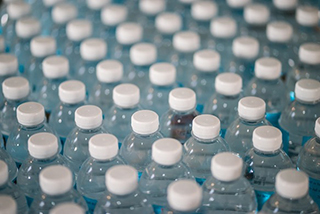November 30, 2022

Beliefs in some communities that tap water poses health risks may contribute to increased bottled water use, according to a study funded in part by NIEHS. A better understanding of the factors driving drinking water preferences can help inform efforts to educate community members about local water quality.
“As the public’s awareness of environmental pollutants and water contamination increases, trust in public water utilities diminishes, particularly for communities that already face a high burden of environmental pollution,” said Paloma Beamer, Ph.D., who directs the Community Engagement Core within the University of Arizona’s Southwest Environmental Health Science Center.
Understanding Community Perceptions
Beamer and team conducted their study in Nogales, Arizona, a city on the U.S.-Mexico border where the population is roughly 95% Latino, and 34% live below the federal poverty level.
Previous studies suggest that Latinos are more concerned about drinking water contamination than other ethnic groups and are more likely to drink and give their children bottled water.
“The reasons why Latinos may be more likely to perceive their tap water as unsafe are complex and multi-faceted, and much of it is related to current and historical localized issues,” explained Beamer.
In Nogales, trust in tap water has eroded in recent years due to groundwater contamination events and past drinking water violations by utilities. However, when Beamer and team analyzed Nogales tap water, contaminant levels did not exceed standards set by the U.S. Environmental Protection Agency.
The team asked low-income Latino households from Nogales to rate their perceived risk of drinking local tap water, as well as the risk of other activities such as smoking. Participants viewed drinking tap water as risky as drinking and driving and significantly riskier than smoking or riding a motorcycle.
Nearly 98% of participants feared that drinking local tap water could result in illness, and 79% did not drink top water for fear of contamination.
“Participants noted their greatest concerns were developing cancer, gastrointestinal illnesses, or lupus if they drank the tap water,” Beamer said. “The majority responded that they would drink tap water if they knew it was safe, even if it tasted bad.”
Health Equity and Outreach
Participants viewed bottled water to be significantly safer than tap water, though drinking unfluoridated bottled water may increase the risk of cavities.
“Dental cavities are associated with so many other health problems, including cardiovascular disease,” explained Beamer. “None of our participants were asked or advised about the water they drink by their health or dental care providers, which poses a serious health equity issue for Latinos in Nogales.”
Additionally, all study participants had a household income less than $30,000 annually, and more than half had an income less than $15,000.
“Bottled water costs hundreds to thousands of times more than tap water,” Beamer said. “Families could use these funds to purchase more healthy foods or other items they need to promote health.”
According to Beamer, focusing on communities with historic water quality challenges will help inform design of public health interventions not only for this community, but also for others with historic mistrust of tap water.
“Outreach efforts will need to start with acknowledging the historical trauma that has led to this situation and working with the community to restore trust in the municipal water supplies,” Beamer said. “Now that these findings have been published, we are working with our partnering community health center to support their efforts to educate the community about the safety and risks associated with tap water consumption in order to promote health and well-being.”


